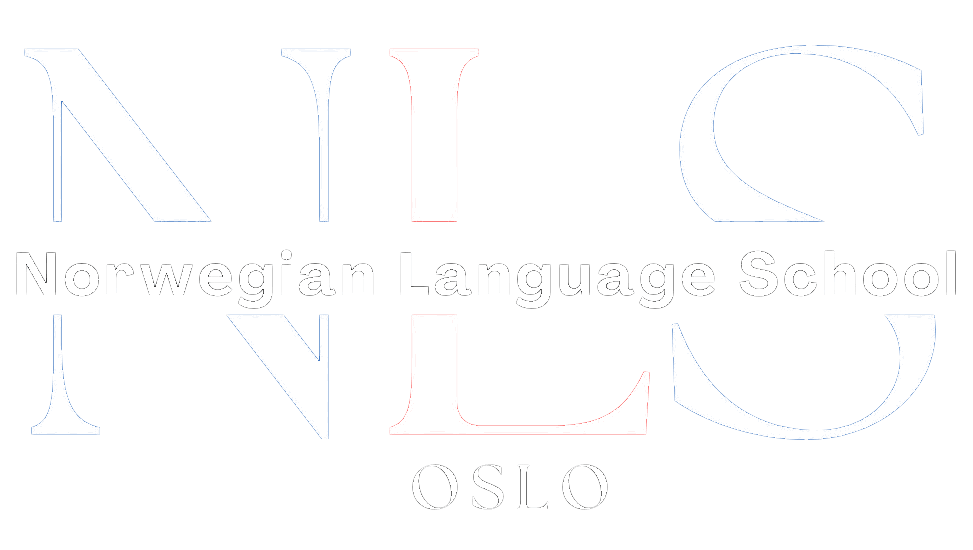

Mastering Italian Through Certification: Tips, Techniques, and Inspiration
Learning Italian can be a thrilling journey filled with cultural discovery, fascinating literature, delicious cuisine, and opportunities to connect with a whole new world of speakers. Yet, one stage often proves pivotal for learners aiming to take their language skills to the next level: obtaining an official proficiency certificate. Whether you’re a student, a professional looking to broaden career horizons, or someone with a deep passion for Italian opera, literature, or history, earning a recognized certification can validate your progress, sharpen your language abilities, and open new doors.
In this second in-depth exploration of Italian proficiency tests, we’ll look beyond the mere logistics of exam levels and structures. We’ll delve into strategic preparation methods, motivational techniques, and how to sustain language growth even after you’ve received your certificate. You’ll also discover how NLS Norwegian Language School in Oslo can play a key role in helping you reach your Italian language milestones (link provided below).
Table of Contents
Toggle1. Setting Clear Goals for Your Italian Learning Journey
Before registering for any exam, it’s essential to define your primary objectives. Understanding your motivation helps align your study plan with your aspirations:
- Academic Purposes: Perhaps you aim to study at an Italian university known for its art history, fashion design, or culinary programs. Universities often require B2 or C1 certification to ensure non-native speakers can handle coursework, lectures, and research.
- Professional Growth: In a competitive job market, being bilingual or multilingual can be a game-changer. An Italian certificate can help you stand out, especially if your industry involves tourism, import-export, fashion, or international relations with Italian-speaking partners.
- Personal Fulfillment: Sometimes, the goal is purely personal—challenging yourself to master a new language, connect deeply with Italian culture, or confidently travel across Italy.
Identifying your “why” lays a foundation for your “how.” Not only will it guide you in selecting the appropriate exam and level, but it will also serve as a source of inspiration when grammar drills or vocabulary memorization get tough.
2. A Snapshot of the Main Proficiency Exams
As discussed in the previous article, three major Italian proficiency tests stand out for their global recognition and alignment with the Common European Framework of Reference for Languages (CEFR):
- CILS: Offered by Università per Stranieri di Siena.
- CELI: Administered through Università per Stranieri di Perugia.
- PLIDA: Managed by the Società Dante Alighieri.
All three cover levels from A1 (beginner) to C2 (mastery). The exams test listening, reading, writing, and speaking, and some include a separate grammar/vocabulary section. While the specifics of each test may differ slightly, they share the same overarching goal: to verify your ability to communicate effectively in Italian. Ensure you check the official websites or contact local centers for the most up-to-date information on test dates and registration procedures.
3. Crafting a Winning Study Plan
Achieving a high score on any Italian proficiency exam doesn’t happen by chance. It requires a well-designed study plan customized to your goals, schedule, and learning style. Here’s how to structure your preparation:
- Assess Your Starting Point
Take a diagnostic test to identify strengths and weaknesses. This ensures you don’t waste time reviewing content you’ve already mastered. Many exam providers or language schools offer free placement tests. - Break Down Skills
Separate your study sessions by skill: reading, writing, listening, speaking, and grammar/vocabulary. Rotating these focus areas ensures balanced development across all exam sections. - Set a Timeline
Decide how many months you can dedicate to preparation. For lower levels (A1–A2), a few months may suffice, whereas higher levels (C1–C2) may require a year or more of consistent study. - Use Official Guidelines and Materials
If you plan to take CILS, CELI, or PLIDA, look for official past exams or sample tests. These materials give you a realistic preview of question types, difficulty level, and time constraints. - Regular Review
Incorporate frequent mini-reviews of vocabulary, grammar, and recently covered topics. Spaced repetition is a proven method for cementing knowledge in long-term memory. - Seek Feedback
Self-study can only get you so far. Feedback on writing and speaking tasks is critical for improvement. Consider enrolling in Italian classes at the NLS Norwegian Language School in Oslo for professional guidance and detailed critiques of your work.
4. Strategies for Each Exam Section
Understanding the exam format is just the beginning. Tailor your study methods to maximize success in each of the key areas:
- Reading
- Variety of Texts: Familiarize yourself with multiple text types—newspaper articles, short stories, marketing brochures, and even academic papers (for advanced levels).
- Skimming and Scanning: Practice reading faster and identifying main ideas. Then, go back to locate specific details.
- Vocabulary Building: Keep a dedicated notebook of unfamiliar words and phrases. Review them consistently.
- Listening
- Active vs. Passive Listening: Active listening involves transcribing short audio clips or summarizing what you’ve heard. Passive listening (like having Italian radio on in the background) can also help with immersion, but active practice is more valuable for exam readiness.
- Authentic Materials: Use podcasts, YouTube videos, or Italian TV shows. Gradually increase the difficulty by choosing more complex or specialized topics.
- Writing
- Structuring Your Text: For formal writing tasks (essays, letters, reports), practice using clear paragraphs, transitional phrases, and an appropriate register (formal vs. informal).
- Targeted Exercises: Attempt past exam prompts under timed conditions. Focus on clarity, argument structure, and grammatical accuracy.
- Error Analysis: Keep track of common mistakes. Look for patterns (e.g., misuse of subjunctive, incorrect verb-agreement, or preposition errors).
- Speaking
- Conversation Partners: The best way to improve speaking is through real conversations. Join local Italian language meetups or online language exchange platforms.
- Simulate Exam Conditions: Practice speaking on random topics for 2–3 minutes, then engage in a follow-up discussion with a teacher or partner.
- Pronunciation Drills: Pay attention to vowel sounds and consonant combinations (like “gn” and “gli”), as these can significantly affect clarity.
- Grammar and Vocabulary
- Contextual Learning: Memorizing lists of words or grammar rules is less effective than learning them in context. Integrate new terms into sentences or short dialogues.
- SRS (Spaced Repetition Systems): Tools like Anki or Quizlet use algorithms to remind you of words at optimal intervals, boosting retention.
5. Maintaining Motivation
Even the most dedicated learners may lose momentum over time. Here’s how to stay inspired:
- Celebrate Small Wins: Did you successfully hold a 15-minute conversation in Italian without reverting to English? Treat yourself! Mini-milestones keep enthusiasm high.
- Immerse Yourself in Italian Culture: Incorporate activities that bring the language alive—cooking Italian recipes while following instructions in Italian, watching classic Italian films, or reading short stories.
- Connect with Others: Join an Italian cultural association or online community. Sharing experiences, tips, and resources with fellow learners can reignite passion and provide accountability.
- Track Your Progress: Keep a journal of your daily or weekly study activities and note improvements in your comprehension or speaking skills. Reflecting on how far you’ve come can be hugely motivating.
6. Overcoming Common Challenges
Learning Italian, like any language, comes with hurdles:
- Difficulty in Understanding Dialects
Italy’s regional dialects can pose a challenge if you live in or plan to travel to certain areas. However, the official language tested in exams is standard Italian. While dialect exposure is culturally enriching, focus on standard Italian for exam success. - Grammar Complexities
Italian grammar involves nuances like the subjunctive mood and various verb conjugations. Break them down systematically. Practice repeatedly with targeted exercises. Don’t shy away from professional help if needed. - Time Management
Balancing exam prep with work, studies, or family life can be overwhelming. Use digital calendars or planners to schedule daily or weekly language practice. Even 30 minutes a day can lead to steady progress. - Fear of Speaking
Many learners dread making mistakes in conversation. However, mistakes are an integral part of language acquisition. Embrace them as learning opportunities, and with time, you’ll feel more confident speaking.
7. Post-Certification: What’s Next?
Earning your Italian proficiency certificate is a major milestone, but it shouldn’t mark the end of your learning journey. Language is alive and ever-evolving, so consider the following ways to maintain and enhance your skills:
- Enroll in Advanced Courses or Workshops
If you obtained a B2 certification, why not aim for C1? Continuous learning opens doors to more nuanced understanding and communication skills. - Join a Book Club
Reading literature, whether classic works by Dante, Machiavelli, or more contemporary authors, expands your cultural awareness and vocabulary. Discussing these works in a club setting keeps you accountable. - Travel or Study Abroad
Immersion is one of the best ways to improve. If feasible, spend time in Italy, either as a student, intern, or volunteer. - Use Language Apps for Maintenance
Even after you’ve achieved certification, short daily exercises on apps like Memrise or Clozemaster can help maintain vocabulary. - Tutoring or Language Exchange
Teaching someone at a lower level can reinforce your skills. Language exchange with native Italians helps you stay fluent.
8. The Role of NLS Norwegian Language School in Oslo
Preparing for an Italian proficiency exam can be daunting. Having knowledgeable instructors who provide structure, accountability, and motivation can make a huge difference. The NLS Norwegian Language School in Oslo has a strong reputation for quality language instruction—not only in Norwegian but in Italian as well. Their Italian courses are taught by skilled instructors who often have native-level fluency in Italian, ensuring you get:
- Tailored Lesson Plans: Course material is adapted to your learning pace and exam goals.
- Exam-Focused Techniques: Mock tests, thorough grammar explanations, and speaking drills geared toward CILS, CELI, or PLIDA formats.
- Flexible Schedules: Whether you prefer group lessons, private sessions, or online learning, NLS aims to accommodate different lifestyles.
- Supportive Community: Join a network of learners equally passionate about mastering Italian.
To learn more about their programs or to register, visit: https://nlsnorwegian.no/learn-italian/. With the backing of a reputable language school, you can expedite your preparation process and walk into the exam with greater confidence.
9. Real-Life Success Stories
Countless students have found success through diligent study and professional guidance. Here are a few hypothetical examples to illustrate how certification can impact careers and personal growth:
- Anna, the Aspiring Art Historian: Anna passed the CILS B2 exam before applying for a master’s program in Florence. Her certification demonstrated her readiness to attend lectures in Italian. After completing her degree, she now leads guided tours in major Italian museums.
- Michael, the International Business Professional: Michael required an Italian language certificate to close a major deal with an Italian manufacturing firm. Earning the PLIDA B2 certificate not only unlocked that business relationship but also gained him recognition within his company for taking the initiative to learn a key partner’s language.
- Sophia, the Cultural Enthusiast: Sophia fell in love with Italian opera and decided to master the language. She earned the CELI C1, which deepened her understanding of librettos and allowed her to volunteer at an Italian cultural center. She now helps others discover Italian musical heritage.
Such stories underscore the tangible benefits of formal certification. It’s not just about passing a test but about enriching your life and expanding your horizons.
10. Key Takeaways and Final Reminders
- Goal Alignment: Always know why you’re pursuing certification—academic, professional, or personal—to guide your preparation.
- Structured Study: Balance all language skills, practice time management, and seek feedback.
- Stay Motivated: Celebrate progress, immerse yourself in Italian culture, and connect with other learners.
- Professional Guidance: Consider enrolling in courses, such as those offered by NLS Norwegian Language School in Oslo, to benefit from expert instruction and a supportive environment.
- Post-Exam Growth: Language learning doesn’t end once you receive your certificate. Keep practicing, exploring, and engaging with Italian.
If you’re ready to take your Italian to new heights, examine the available proficiency exams—CILS, CELI, or PLIDA—and choose the one that best aligns with your goals. Above all, remember that learning a language is a marathon, not a sprint. With the right approach, adequate preparation, and sustained curiosity, you can enjoy a rewarding journey that goes well beyond any test date.
Conclusion
Italian proficiency exams validate a journey of cultural and linguistic discovery, motivating learners to refine their reading, writing, listening, and speaking skills. While preparing for these tests can be challenging, the resulting benefits—ranging from university admission to career advancement—are immense. Moreover, the joy of conversing fluently in Italian, understanding Italian media and literature, and connecting with native speakers on a deeper level is often the greatest reward of all.
If you’re seeking structured guidance, camaraderie, and a proven teaching methodology, consider the Italian courses provided by NLS Norwegian Language School in Oslo. To explore their offerings and sign up, follow this link: https://nlsnorwegian.no/learn-italian/. Remember, every word you learn is a step closer to fluency, and every step is a doorway to Italy’s vibrant culture and global opportunities. Buona fortuna!






